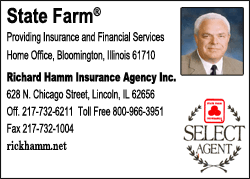 The document came to light as a result of global contacts made by
the Papers of Abraham Lincoln during its search for any document
written by or to the 16th president. One of those contacts, Tim
Verhoeven at Monash University in Melbourne, Australia, remembered
seeing what he thought was a Lincoln-related document while doing
research in Switzerland. He sent a digital image to the experts in
Springfield, who then contacted the Bibliothèque de Genève. The
Papers of Abraham Lincoln was able to confirm the two-page letter as
a previously unknown Lincoln document. The document came to light as a result of global contacts made by
the Papers of Abraham Lincoln during its search for any document
written by or to the 16th president. One of those contacts, Tim
Verhoeven at Monash University in Melbourne, Australia, remembered
seeing what he thought was a Lincoln-related document while doing
research in Switzerland. He sent a digital image to the experts in
Springfield, who then contacted the Bibliothèque de Genève. The
Papers of Abraham Lincoln was able to confirm the two-page letter as
a previously unknown Lincoln document.
"This is a reminder that Abraham Lincoln was a towering figure,
not just in America but across the world. The Illinois Historic
Preservation Agency is proud that our scholars have once again used
their ingenuity and determination to track down another piece of the
Lincoln story," said IHPA Director Amy Martin.
When Professor Verhoeven's tip led to the discovery of the
Lincoln document halfway around the world, it also uncovered the
remarkable story of Emilie Jane Merriman, correspondent for the New
York Times and eyewitness to Lincoln's Second Inaugural and
Inaugural Ball who then was invited for a private interview with the
president.

The letter of introduction for Merriman was written May 22, 1863,
by Henry Ward Beecher, the most famous minister in 19th-century
America and brother of Harriet Beecher Stowe, the author of "Uncle
Tom's Cabin."
Beecher wrote:
"I desire to
commend the bearer, Mrs. E. R. Merriman, to the care & affectionate
confidence of all Christians among whom her lot may be cast. She is
a member beloved of the Plymouth Church, Brooklyn, N.Y.; and during
her absence, on errands of travel, carries with her the sympathy and
Christian esteem of her brethren in fellowship. May the Lord watch
over her, under every sky, and safely restore her in due season to
her place and friends in America. Henry Ward Beecher."
Beecher also introduced Emilie Merriman to the editor of the New
York Times, for which she wrote some pieces from Europe in the
summer of 1863. After her return to the United States, the newspaper
assigned Merriman to cover Lincoln's Second Inaugural Ball, on March
6, 1865. Merriman attended the ball and wrote her report beginning
at 1 a.m. She finished it by 3 a.m. and sent it by telegraph to the
New York Times.
After reading it, Lincoln invited Merriman to the White House
"that he might express personally his appreciation of my Inaugural
Letter," she recalled later. Merriman gladly accepted and said
Lincoln received her "with that kindness and courtesy which belongs
to truly great men, endowed with native kindness and dignified
simplicity."
[to top of second column] |
 Perhaps at her request, Lincoln added an endorsement to the
letter of introduction:
Executive Mansion
Washington, March
7, 1865
I have no personal
acquaintance with the lady of whom Mr Beecher has written above; but
his commendation is a good voucher with me, and should be, I think,
with others.
A. Lincoln.
The document can be seen at
http://tinyurl.com/BeecherLincoln.
According to her reminiscence, Lincoln also said to her:
"I hear you are
going to Europe; well, that is a good thing to do, only tell the
people there that we of the North are fighting a Good Battle in a
Great Cause for Humanity, and one which merits the approbation of
foreign people and foreign powers."
Still concerned about diplomacy, he added:
"Perhaps one loyal
and intelligent woman, coming from the seat of war, and using her
voice and pen as you do, can do more to influence private, and
thereby public opinion—which is divided in Europe concerning the
North and South in our disastrous war—than any number of
Ambassadors, who are at a distance."
___
The Papers of Abraham Lincoln is a long-term project dedicated to
finding and publishing all Lincoln documents. The project is
administered through the Abraham Lincoln Presidential Library and
Museum, and co-sponsored by the Center for State Policy and
Leadership at the University of Illinois Springfield and by the
Abraham Lincoln Association.
[Text from
Abraham
Lincoln Presidential Library and Museum
file received from the
Illinois Historic
Preservation Agency]
 |